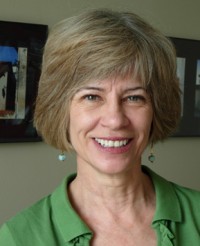How should we evaluate teachers?
With our office in downtown Chicago, members of the Century staff are becoming used to the drifts of red-shirted teachers moving about the streets, some with placards, some with their families, most looking energized and purposeful—though that may well change if this strike continues. On the fourth day of the strike, the power play between Mayor Rahm Emanuel and Chicago Teachers Union president Karen Lewis is wearing thin on many Chicagoans as they weave their way around rallies to delayed and rerouted buses and trains.
Lewis says that 43 issues are keeping the strike unresolved; the school board claims that only two issues remain. One is the protocol for rehiring teachers who have been laid off. The knottier one is teacher evaluation. In a panel discussion on PBS affiliate WTTW’s show Chicago Tonight, Tim Knowles, director of the Urban Education Institute at the University of Chicago, notes that the current evaluation system is 40 years old—and adds that it doesn’t work. According to data on teachers’ evaluations from 1997, says Knowles, 99.7 percent of the teachers in the Chicago Public Schools were rated “satisfactory or distinguished.”
How can almost all of a district’s teachers fall into this category? How do we build a system that improves teacher quality? The controversial proposal would rate teachers based on three factors: principals’ observations, student test scores and student feedback. (Some peer observation is also included.) The grating point with teachers is the word “tests,” tests that would evaluate student growth.
The union doesn’t disagree that we need a mature evaluation system, says Bob Bruno, professor at the School of Labor and Employment Relations at the University of Illinois at Chicago. But teachers are worried about tying teacher performance to student performance in a “sorting measurement” that feeds into job insecurity and feels to teachers like a weapon.
Do the tests really reflect a teacher’s performance, or are they too elaborate, too contrived to be a realistic measure of student growth, let alone of a teacher’s performance? How does one allow for the different beginning skills/situations of a particular student?
By the fourth year of implementation, the test score would would count for as much as 40 percent of the evaluation. With a margin of error that can be as high as 50 percent, teachers are understandably anxious.
But Heather Anichini, president and CEO of the Chicago Public Education Fund, argues that these are not just standard tests but were designed by teachers considered to be “good teachers.” The new process actually began a year ago with a trial run, says Anichini, and a committee of CPS members is in place to evaluate and make modifications. In other words, teachers have been and will be involved in an ongoing process. And the school board has used multiple factors—not just tests—for this very reason.
But it’s too much, too soon, says Bruno. We should take needed time to figure this evaluation piece out, and relieve the fear that CPS is not just using a dramatic strategy to get around what they see as an obstructionist union.
I’ve taught in the public schools, and I’ve seen how slowly wheels turn when major change is involved. My vote is to get started ASAP on some kind of change in evaluation. Put in the assessments of the new process; involve teachers; leave room for revision and improve communication.
Perhaps I’m too impatient. As Bruno points out, if 26,000 teachers are agitated about a process, then we have to slow down and address their fears. But why didn’t the union itself propose more dramatic changes in the last 40 years? Is the union prepared and capable of initiating change of this magnitude?






